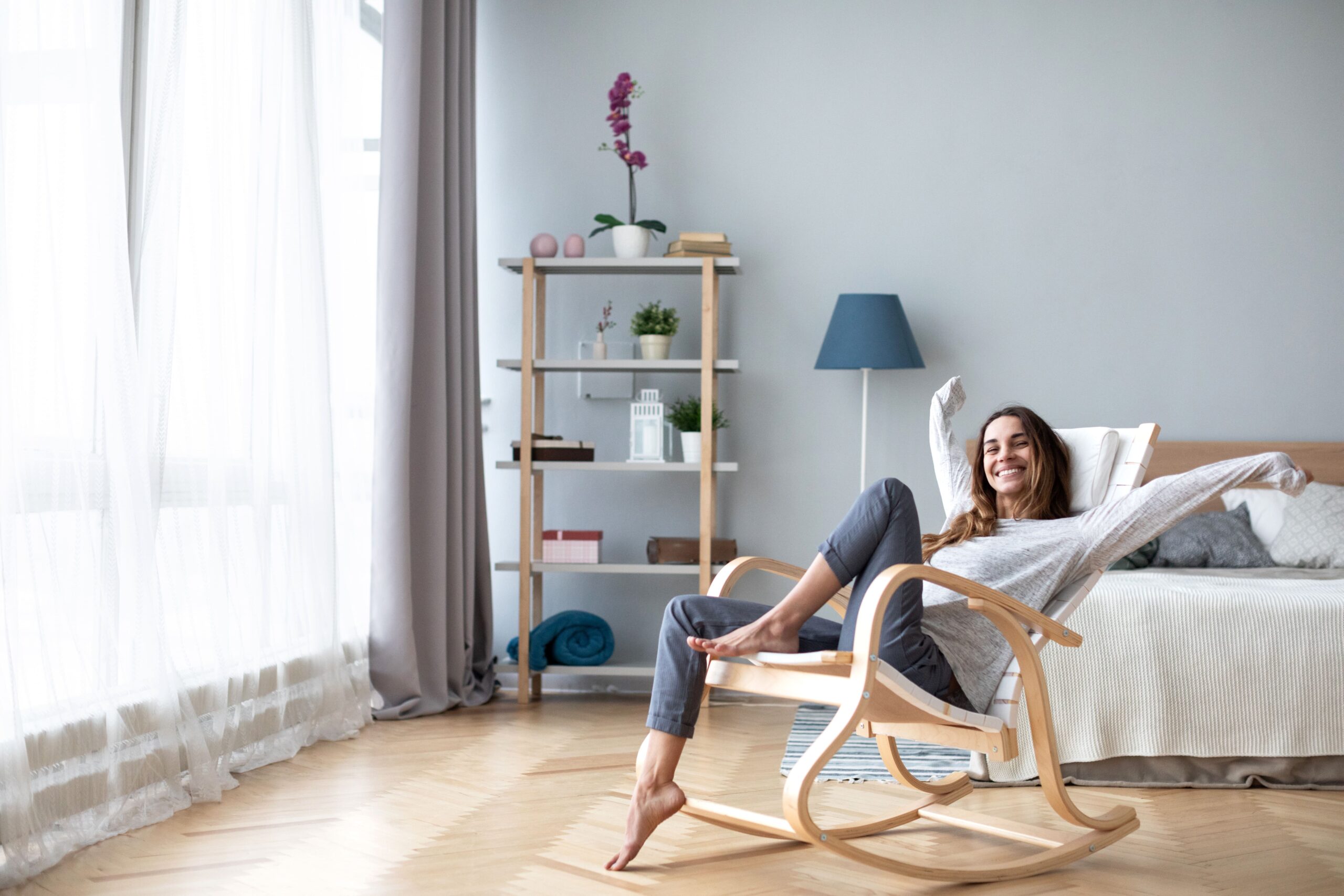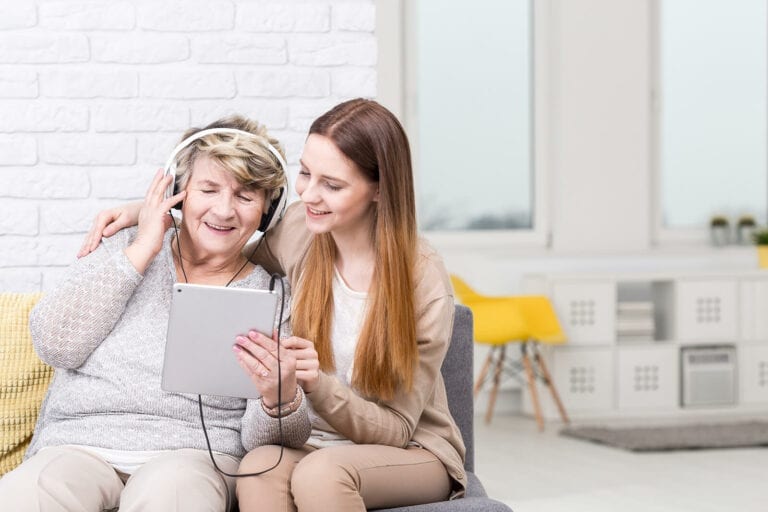Follow one easy rule to get started: try to find methods to relax!
Here are a few methods for doing it.
Choose comfort
All of us as humans have a strong desire for security and safety and search for those qualities in our surroundings. We also look for psychological comfort, which is a combination of stimulus and familiarity, as well as physical comfort, such as the proper temperature in the area. So think about how you may increase your comfort level!
- Boost your sense of security by doing a house audit, perhaps with advice or assistance from your police department.
- To enhance home safety, read “How to create a safe and comfortable living environment at home”.
- Consider your home’s physical comfort, including the furnishings, flooring, and temperature, to mention a few. You could be able to add a tiny carpet beside the bed or opt to start saving money for bigger goods like more comfy chairs to make it cozier.
- Take into account how you could add some originality or appeal to your house to provide some stimulation.
Reduce the mess
Stress is increased by visual “noise”. We can experience anxiety, sadness, or helplessness in a cluttered, filthy, or perplexing setting.
Start with a modest space. De-clutter a shelf, organize a drawer or clean off a counter. You’ll feel accomplished as a result, which will motivate you to keep going and offer you something to focus on when the turmoil around you becomes disheartening. From now on, keep that area clear of clutter, and build on it by conquering one more area at a time.
Give your senses a treat
- When choosing colors for your walls and furniture, consider your taste.
- Put pictures and mementos that hold special importance for you in places you frequent.
- Include an aquarium or art that you admire.
- If the sound appeals to you, include a water element.
If you want to diffuse any enticing essential oils, think about obtaining a diffuser or vaporizer.
Improve the lighting
Natural light, or daylighting, is linked to elevated spirits, decreased weariness, and decreased eyestrain. So make use of any available natural light. Add a variety of other light sources, such as a floor lamp, to it after that.
Incorporate nature
According to studies, even a brief encounter with nature can considerably lower stress, calm anger and fear, and heighten positive emotions. Put a comfy chair where you may appreciate views of trees, other plants, or other natural features if you have them. To achieve a similar result, you might also add aquariums, indoor plants, or works of art with a natural theme.
Quiet down the roar
Use these straightforward suggestions:
- Be aware of the noise you make on your own. For instance, are you watching TV, or is it just playing in the background? Instead of a power model, may you utilize a push mower? choosing “vibrate” as opposed to the newest ringtone? The peace is increased by even modest acts.
- To provide a noise barrier, plant trees, particularly evergreens.
- To drown out stressful urban noise, try playing recordings of natural noises like birds or water.
Remember the garden
According to research, having a garden has a variety of advantages. The more frequently you visit it and the closer it is to your home, the less stress it will cause. As an exercise, gardening is beneficial.
Begin modestly
Picking a space you can transform into a healing area, such as a room or a corner, is one place to start. It’s great if you already have a favorite location that you can use. Much better if it has a view of the outside and good natural lighting.
Then, decide which activities you find to be the most restorative, and modify the environment to suit them. Do you enjoy reading? Bring a cozy chair and good lighting into the area. Are you a meditator? Maybe a water feature would make you unwind and concentrate. You might even discover that your healing room is a workbench where you construct or repair items, in which case you’ll need to arrange your tools and provide adequate lighting.
Have in mind your environment
Think about your mental environment as well as your physical environment. Recognize that positive attitudes, resilience, self-efficacy, and a sense of control are associated with good health and may be acquired through practice. For your encounters at home, make a good intentions!
Maintain childproofing.
A house that contains young children must be child-proof.
- You should never leave medicines, chemical-filled cleaning tools, sharp objects, or other potentially harmful items within a child’s reach.
- Covers for electrical outlets and plug sockets are recommended.
- Other factors to consider include clutter that might lead to slipping mishaps or unlatched windows that could cause a curious toddler to tumble out.
- To reduce the risk of unintentional strangling, blind or curtain cords should be placed out of little children’s reach. The crib needs to be away from windows with wires if there is a baby in the house
Reduce loud noises
These days, there is simply too much noise everywhere. Although most people are unaware of it, noise harms health, interfering with sleep, causing you to lose focus on your current work, and increasing stress levels. A place of peace where the mind may unwind and relax is always helpful.
Make wholesome, well-balanced meals.
The entire family has to eat wholesome meals to stay in good health. Your health may be impacted by the food you eat. Youngsters should consume healthy snacks rather than bad food. To ensure that everyone leads a healthy lifestyle and is less likely to contract diseases as a result of unhealthful eating habits, vegetables, and fruits must always be a part of family meals.
Your family’s health and safety are always going to come first. Everyone should feel safe and comfortable in your house, knowing that they are safeguarded and in good physical and mental health.
Home Care Near Me Let’s Get Started!
Get Immediate Help with Information, Costs & Payment Options.







